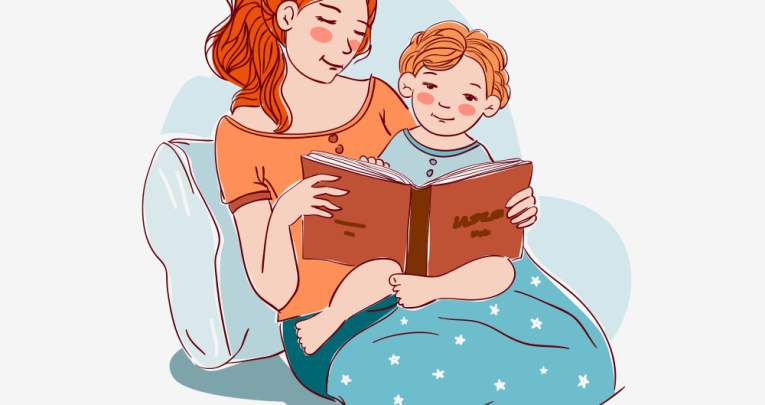Make the Most of Story Time in EYFS

Sharing a book is one of the most enjoyable parts of the day, but could you help your early years children get even more out of the experience? James Clements has some suggestions…

- by James Clements
- Writer, researcher and independent English adviser Visit website

There are few parts of the school day more enjoyable than story time and few sounds more pleasing than when the book is closed and the children let out a collective groan.
But while it’s an undeniably joyful activity, research also confirms what teachers have known forever: listening to a story can have a profound effect on children’s education.
Reading aloud supports children’s vocabulary development, their knowledge and understanding of the world and their ability to empathise, and will eventually have a positive effect on their writing.
What’s more, if listening to a story encourages children to become regular readers themselves one day, then the positive effect might stretch beyond English and literacy to the full breadth of the curriculum.
So, just how can we help children to get the most out of their daily story?
Give them some background
Most stories can be enjoyed on their own, without too much of an introduction. However, if we want children to get the most from the book then sometimes knowing some key information first can be really handy.
Reminding the children about the Big Bad Wolf before reading Nadia Shireen’s Good Little Wolf helps the class to think about the story within the context of what they know already.
Asking if anyone has a pet guinea pig before reading Christopher Nibble by Charlotte Middleton can help to frame the story within children’s own experiences.
Choose a range of books
We all have favourite books and favourite authors, but delving a bit deeper and ensuring children listen to the widest range of reading material possible is useful for broadening their reading range and ensuring we cater for everyone’s tastes.
A mix of fiction and non-fiction, real stories and magical stories, familiar characters and new experiences, well-known authors and new authors, and, of course, a diverse range of characters and themes helps everyone to see themselves and their interests reflected in the shared book.
For every glorious rereading of The Gruffalo, perhaps try something a little more unusual such as David Barrow’s wonderful Have You Seen Elephant?
Don’t be afraid to reread
Listening to the same book more than once can be hugely valuable educationally.
As well as the opportunity to encounter the same words and phrases enough times for children to internalise them, rereading helps children to the think again about the ideas in the book, perhaps noticing something they missed the first time.
Plus, as anyone who has met a four-year-old will know, you can’t beat the cheer that greets the promise of rereading a current favourite. Again.
All join in
Interactive reading (with the children enthusiastically joining in with phrases, sound effects and actions) can help story time to become a collective endeavour.
Joining in with the story can provide a safe part of the day for those who might be reluctant to contribute in whole-class situations.
Speaking, acting and retelling all support children to internalise elements of the book, giving children a reservoir of language and ideas to draw on in their own play and, eventually, their writing.
Ask questions, but keep it in perspective
There’s nothing wrong with stopping to check everyone is following, or to ask a question or make a particular point – “How do you think the rabbit is feeling here?” or “I wonder why the colours are so dark on this page compared to this page…” – but story time isn’t a lesson, and there’s nothing more likely to kill children’s enjoyment than stopping to pick over every word.
There’s a place for this type of ‘close reading’ in English lessons and specific reading sessions, but avoiding ‘death by analysis’ is crucial in a good story time.
Look at the pictures
In books like Rosie’s Walk by Pat Hutchins or Shh! We Have a Plan by Chris Haughton, it isn’t the words that tell the story but the words and illustrations working together.
Obviously, this can be hugely entertaining: there are few more enjoyable experiences as a teacher than reading the story of Rosie in a dry matter-of-fact voice, while pointing out what is happening in the pictures accompanied with incredulous facial expressions.
But it also allows children to learn to infer information, reading between the lines of a text.
Finally, it can make even very small children who can’t yet read the words feel very clever, as they know exactly what is happening in the story. And learning outcomes don’t come more important than that.
Look at the words
Depending on their age and other factors, children’s ability to read the words themselves will vary enormously, but drawing attention to the words with even the youngest children can be useful.
It shows them that the squiggles on the page carry meaning, reinforcing something that many children will know already (but as teachers across the country will tell you, not all children arrive at school knowing this).
As they mature, this gives children an opportunity to reinforce their developing early reading skills, seeing how a mature reader brings the text to life, and turns the print into spoken language.
Beyond books
Telling the children a story without a book can be hugely engaging, as can singing a song together or reciting a poem or nursery rhyme. Better still, a book and a song and a poem…
All of these suggestions are ways that we can help to make story time as educationally valuable as possible.
Of course, the most pleasing thing is that the real benefit of story time happens whether we follow this advice or not: listening to stories and books read aloud might just help a child to see that these papery things aren’t boring; instead they’re a source of interest, fun and entertainment.
The story they listen to today might be the catalyst to them becoming lifelong readers in the future, with all of the benefits that reading brings.










